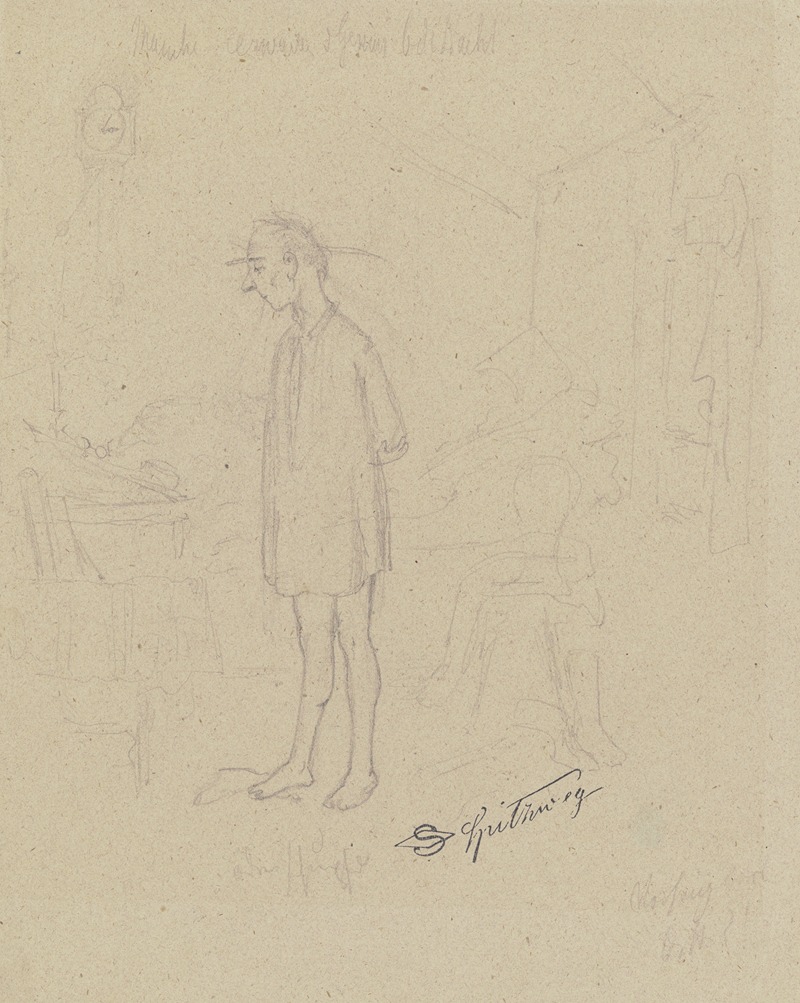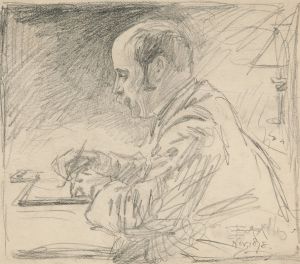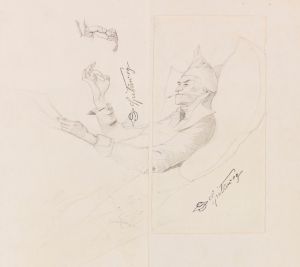
Der Dichter im Hemd an seinem Schreibpult
A hand-painted replica of Carl Spitzweg’s masterpiece Der Dichter im Hemd an seinem Schreibpult, meticulously crafted by professional artists to capture the true essence of the original. Each piece is created with museum-quality canvas and rare mineral pigments, carefully painted by experienced artists with delicate brushstrokes and rich, layered colors to perfectly recreate the texture of the original artwork. Unlike machine-printed reproductions, this hand-painted version brings the painting to life, infused with the artist’s emotions and skill in every stroke. Whether for personal collection or home decoration, it instantly elevates the artistic atmosphere of any space.
Carl Spitzweg's painting "Der Dichter im Hemd an seinem Schreibpult" (The Poet in his Shirt at his Writing Desk) is a notable work by the German Romantic artist, who is renowned for his detailed and often humorous depictions of everyday life in the 19th century. Spitzweg, born in 1808 in Munich, was initially trained as a pharmacist but later turned to painting, becoming one of the most beloved artists of the Biedermeier period.
This particular painting, like many of Spitzweg's works, captures a moment of quiet introspection and creativity. The scene depicts a poet, dressed simply in his shirt, seated at a writing desk. The setting is intimate, likely a study or a small room, which emphasizes the personal and solitary nature of the creative process. The poet is absorbed in his work, surrounded by books and papers, suggesting a life dedicated to literature and thought.
Spitzweg's attention to detail is evident in the careful rendering of the objects in the room, from the texture of the poet's shirt to the various items on the desk. This meticulousness is characteristic of Spitzweg's style, which often combines elements of realism with a gentle, humorous touch. The painting reflects the Romantic ideal of the solitary genius, a common theme in the 19th century, where the artist or poet is seen as a figure deeply engaged with their inner world and creative pursuits.
The lighting in the painting is soft and warm, creating an atmosphere of tranquility and focus. This use of light is another hallmark of Spitzweg's work, as he often employed it to enhance the mood and draw attention to the central figure in his compositions. The warm tones and gentle contrasts contribute to the overall sense of peace and introspection.
Spitzweg's paintings often contain a subtle narrative or commentary on the human condition, and "Der Dichter im Hemd an seinem Schreibpult" is no exception. It can be seen as a celebration of the intellectual and artistic life, portraying the poet as a dedicated and passionate individual, absorbed in the act of creation. This aligns with the broader Romantic movement, which emphasized emotion, individualism, and the glorification of the past and nature.
While specific details about the provenance or exhibition history of this painting may not be widely documented, Spitzweg's works are generally well-regarded and held in various collections, both public and private. His paintings continue to be appreciated for their charm, wit, and insight into the everyday lives of people during his time.
In summary, "Der Dichter im Hemd an seinem Schreibpult" is a quintessential example of Carl Spitzweg's ability to capture the essence of the Romantic spirit through his detailed and evocative portrayal of a poet at work. The painting remains a testament to Spitzweg's skill in blending realism with a touch of whimsy, offering viewers a glimpse into the world of 19th-century intellectual and artistic life.















